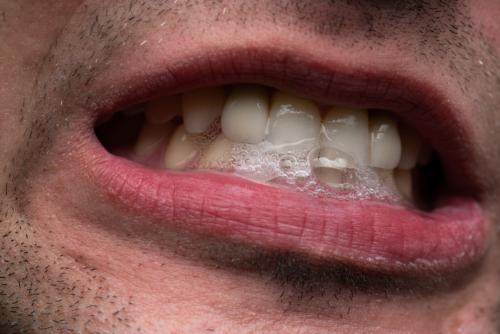The trigger factors of asthma

The risk factors for the occurrence of asthma are classified into two groups: 1. Environmental factorsAlergiaHome: is a heterogeneous mixture of organic and inorganic components. Organic components contain plant allergens (pollens, fungi, cotton, food scraps) and animal (epidermal epidermis of man and animals, hair, wool, feathers, insect components and mites), medicines, cosmetics, detergents, dyes. . Household allergy (especially to) is the most common cause of allergic asthma. Bronchial infectionsWe are considered as an environmental factor because we take them out of nature as well as a maintenance and worsening factor because if they are not treated they can cause complications.
Other environmental factors - smoking - Occupational exposure to certain substances that promote sensitization -. 2. Intrinsic factors - sex is more common in male sex but it is not excluded in women - genetic factors that determine the risk of disease if one or both parents are asthmatic. Besides the two categories of factors, there are also some trigger factors that are responsible for triggering asthma attacks. These are: - allergenic factors (mold, dejections, paints, atmospheric pollutants) - infectious factors - physical effort - endocrine factors (pregnancy) - psychic - certain classes of drugs.
These include the asthma crisis, which includes: wheezing with varying duration and intensity that stops spontaneously or through treatment and is followed by a variable range of lull without specific symptoms. The onset of the crisis is sudden, usually linked to exposure to contact with certain allergens or o. It may also appear with mucous sputum, difficult to remove sticky, and general malaise. 1. Exogenous allergic asthma (extrinsic), which is based on an allergic reaction to a specific antigen in which the patient is specifically sensitized and who is present in the environment or the environment.
2. Non-allergic asthma that includes: - endogenous or infectious (intrinsic) asthma, which is determined by a body factor (endogenous), - physical or chemical irritant asthma (professional asthma), - commonly found in athletes, . Another important classification refers to the duration of crises: 1. Intermittent asthma - crises occur intermittently, especially when the patient is exposed to predisposing factors. 2.
Persistent asthma is the equivalent of intrinsic asthma, and in this case the patient experiences permanent symptoms of various degrees of severity, which can be resolved or worsened as appropriate. Clinical and paraclinical explorations are essential to outline suspicious diagnosis. The first investigations to begin with are: to see the number of eosinophils; . Then, to exclude a lung infection, such as pneumonia, bronchitis, or a chest X-ray. The specific examination for determining ventilator dysfunction is spirometry, which outlines the diagnosis of asthma by determining certain values, such as peak expiratory flow (PEF), which is a specific index during a forced exhalation.
The more severe the disease, the higher the PEF will be. Spirometry is a painless investigation that does not have to scare the patient, because he just has to blow his head in a tube after he has to cover his nostrils with a special bite, so he only breathes his mouth. After the patient finishes the test, the recorder will show the degree of lung damage. It should be known that normal values may also occur if the patient does not have seizures. This does not mean that the disease no longer exists, but that it is a remission of it.
Differential diagnosis is made with the other pathologies that may give wheezing, and these are: asthma, asthma, asthma, asthma, spontaneous airway (sudden obstruction of one of the branches of the pulmonary artery), foreign bodies at the bronchi, . After establishing the final diagnosis, treatment is initiated, comprising a specific scheme, namely two types of treatment: one is etiological and includes prevention of exposure to the causal allergen by avoiding contact with it, changing the workplace in case of professional asthma, avoiding cigarette smoke . The second type of treatment is symptomatic and includes classes of selective or non-selective drugs that help to expand the bronchi and thus reduce symptoms. In addition to specific drugs, there are also spray drugs that can only be administered in crisis or for maintenance. Oxygen therapy also helps a lot in severe seizures when the patient actually suffocates and lowers blood oxygen saturation.
Another group of commonly used drugs are anti-algic, especially used by those who suffer from. If the treatment is not followed according to the physician's indications, then complications may occur, and these may be: Immediate, delayed and delayed infections caused by bronchial superinfections that can lead to, but also iatrogenic complications, due to the wrong treatment and can . .
Source : sfatulmedicului.ro
Views : 3201
Popular Article
- (photo) Nude becomes art.
Posted: 2018-03-17, 9810 views.
- The harmful effects of air conditioning on the skin
Posted: 2017-06-08, 8519 views.
- 3 causes of dyed hair discoloration
Posted: 2017-06-15, 8403 views.
- Why early puberty occurs in girls: symptoms, favors, diagnosis and treatment
Posted: 2017-10-24, 8244 views.
- Good or bad skin treatments in the hot season
Posted: 2017-06-07, 7975 views.
Recommendations
- (photo) Nude becomes art.
Posted: 2018-03-17, 9810 views.
- The harmful effects of air conditioning on the skin
Posted: 2017-06-08, 8519 views.
- 3 causes of dyed hair discoloration
Posted: 2017-06-15, 8403 views.
- Good or bad skin treatments in the hot season
Posted: 2017-06-07, 7975 views.
- Risks of practicing sports on hot days
Posted: 2017-06-12, 7549 views.
 4 effective ingredients in the fight against acne.
4 effective ingredients in the fight against acne. How to get rid of hiccups fast
How to get rid of hiccups fast The wheat bran diet: the secret of lost pounds as if by magic
The wheat bran diet: the secret of lost pounds as if by magic The recipe that will sweeten your soul this weekend!
The recipe that will sweeten your soul this weekend!  Is it dangerous or not to refreeze meat after thawing it?
Is it dangerous or not to refreeze meat after thawing it?  The unusual sign of diabetes indicated by saliva.
The unusual sign of diabetes indicated by saliva. What to drink to boost your immune system.
What to drink to boost your immune system. 10 foods that help you never age.
10 foods that help you never age. What actually happens in your body if you drink a cup of coffee for breakfast
What actually happens in your body if you drink a cup of coffee for breakfast 5 surprising benefits of chia seeds
5 surprising benefits of chia seeds